Play of lines
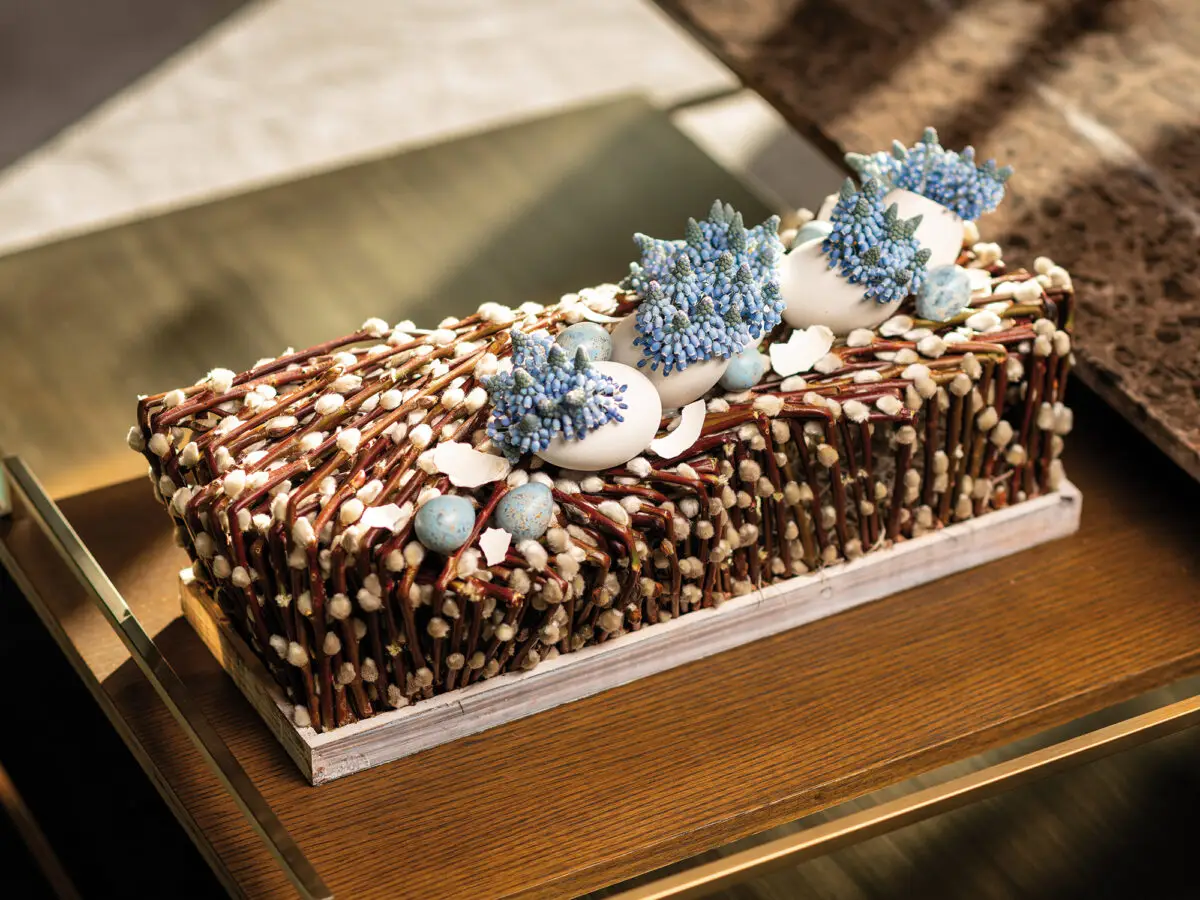
A rectangular wooden dish is filled with clay and covered with dried Tillandsia, which is secured with staples. Willow catkins (Salix) are inserted into the clay, then folded and also secured with the tip in the clay. The resulting tight shape has a beautiful interplay of lines; attention to the design is very important. Duck eggs are glued onto the construction with hot glue, alternating with small blue quail eggs. The duck eggs also act as water carriers, in which blue Muscari flowers are arranged.
Nesting place
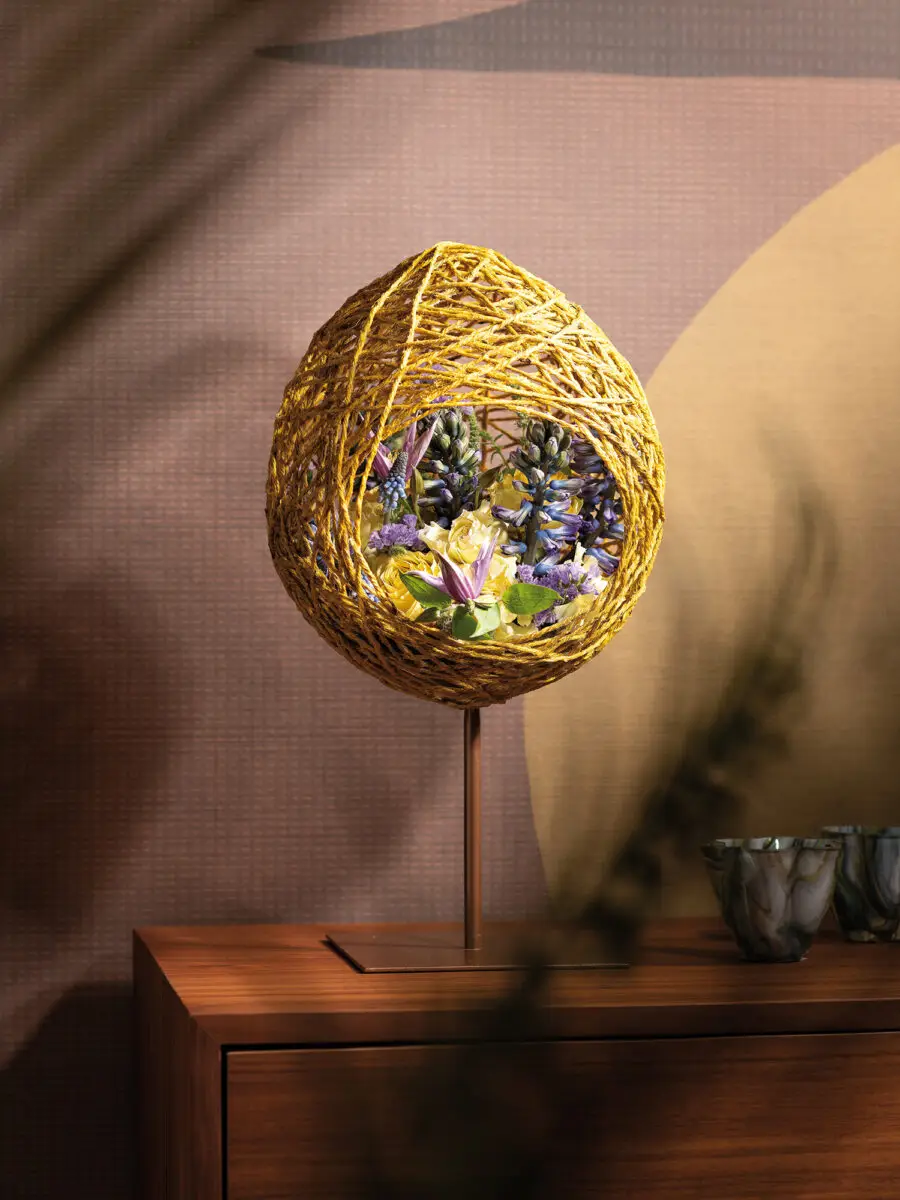
In early spring, life returns: birds sing, flower bulbs emerge, buds burst forth. This egg-shaped nest is the embodiment of a cozy place where small living creatures can nest or take shelter. The base is a balloon to which Compactuna has been applied. Subsequently, the balloon is wrapped in mustard yellow rope, leaving an opening. After thorough drying, the rope hardens, and the nest can be placed on a gold-colored metal pin with a base. The spring flowers are processed in Oasis Bio floral foam. Flowers used: Hyacinthus, Muscari, Rosa, Dianthus, Limonium, Clematis, and Mentha.
Wonder
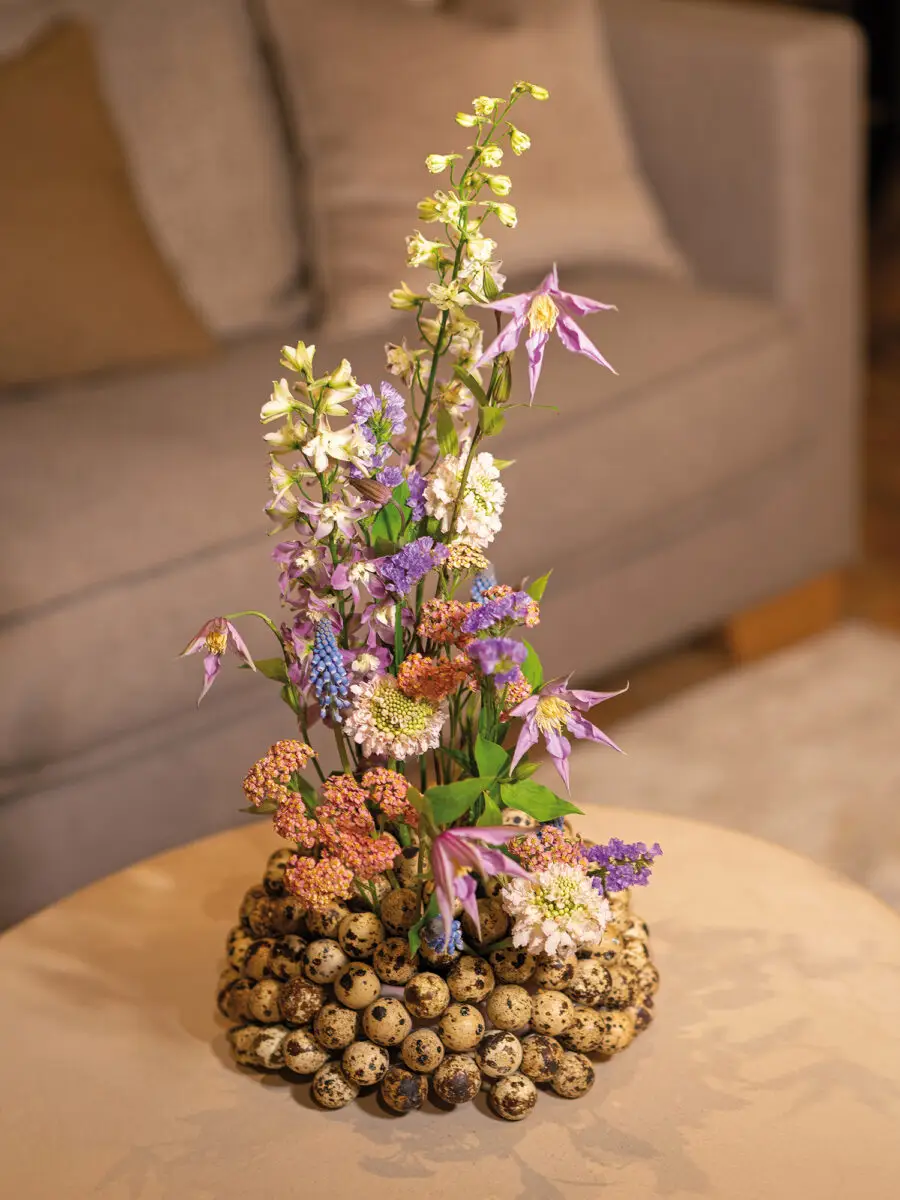
It is fascinating how an egg breaks open and new life emerges from it. This creation symbolizes that wonder. The base is a polystyrene hemisphere on which a (duck) egg is first placed centrally. Quail eggs are then glued around this egg. The polystyrene serves as a mold and is removed after gluing. A piece of Oasis Bio floral foam is placed on a dish – the hemisphere with quail eggs is placed on top of this. A variety of spring flowers are then inserted into the floral foam. Flowers used: Clematis, Muscari, Scabiosa, Delphinium, Achillea and Limonium.
Blue treasure
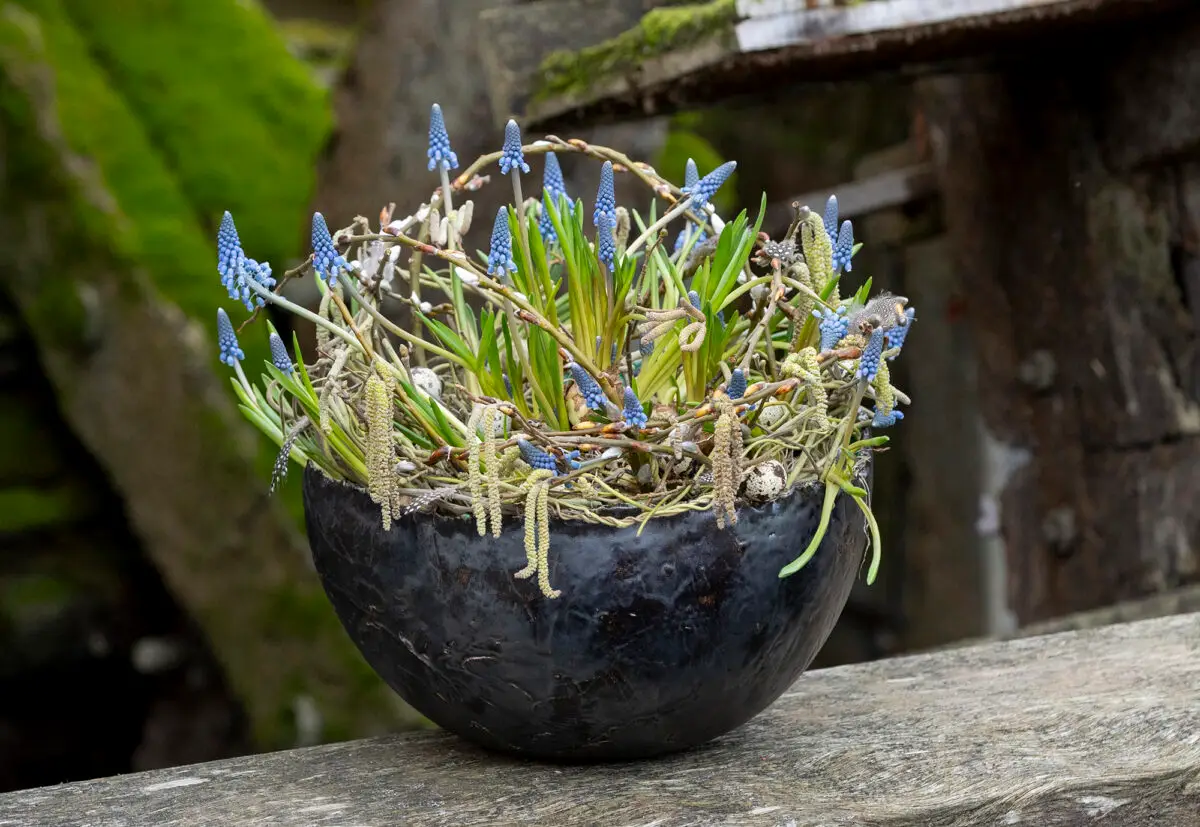
A handmade unique bowl is filled with floral foam. The following materials are arranged in it; sprouting hazel branches with ‘catkins’ (Corylus avellana), tendrils of Dutchman's pipe (Aristolochia macrophylla), Salix viminalis, and blue grape hyacinths on bulbs (Muscari armeniacum). Feathers and quail eggs are glued onto the whole.
Circles
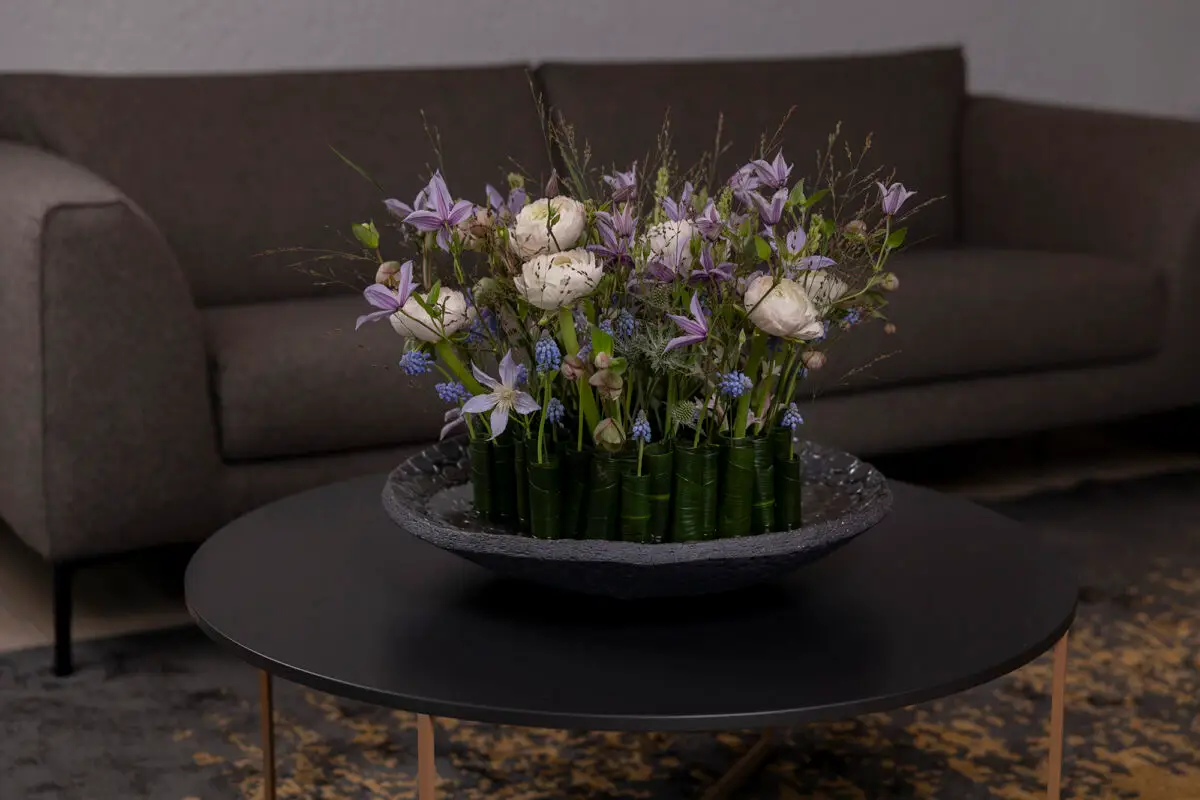
One hundred Aspidistra leaves are rolled up and pinned together to form a large organic circle. This structure stands independently and is placed in a round water bowl with a texture of many small circles. The flowers are arranged within the Aspidistra circle, placed directly in the water. The varieties used are: Clematis ‘Amazing Miami’, Panicum ‘Heavy Metal’, Eryngium ‘Sirius Questar’, Polianthes ‘Epic Elsa’, Helleborus ‘Bella Belles’, Ranunculus, and Muscari.
Transformation
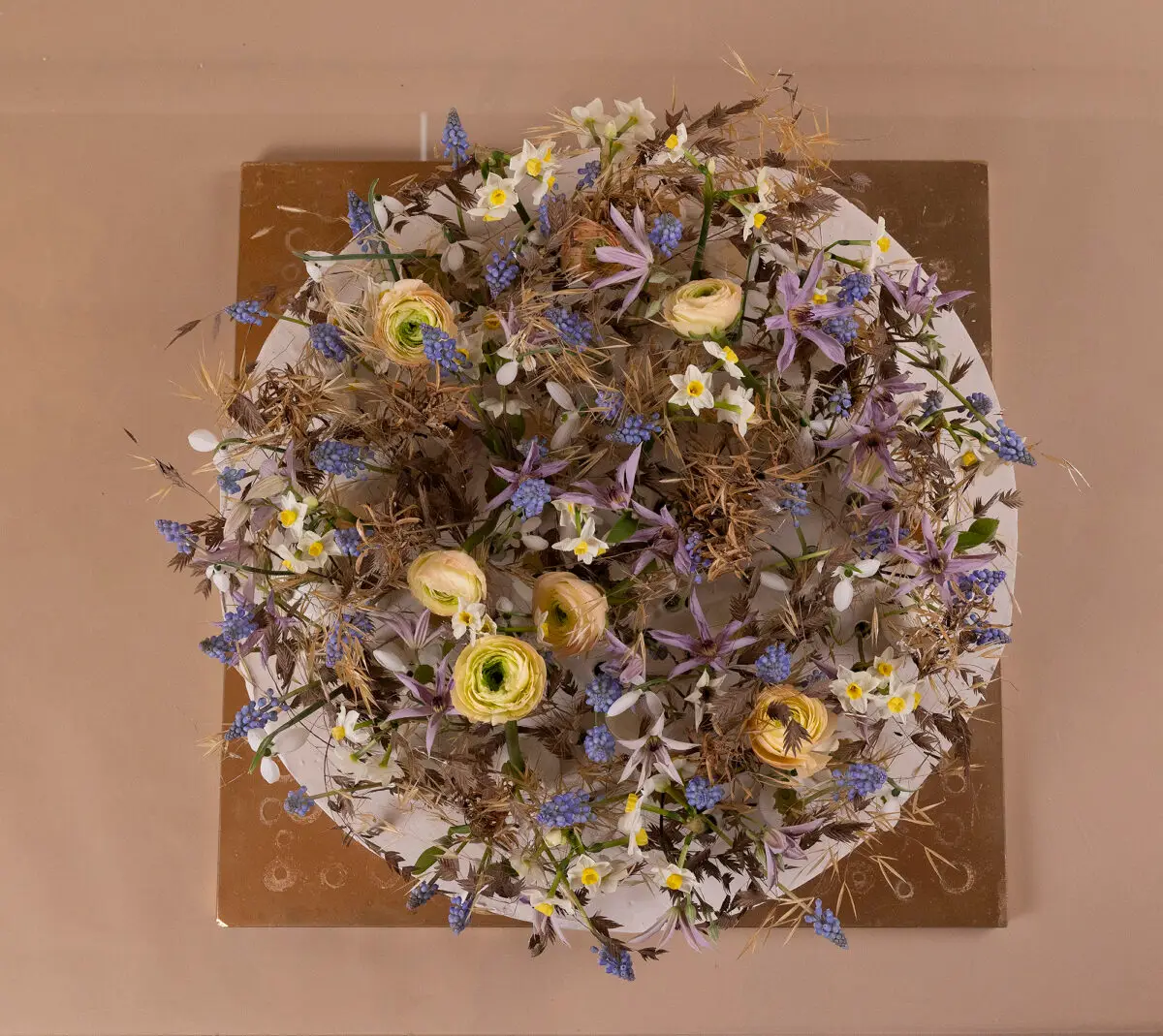
To depict the transformation from winter to spring, old dried grasses and Hosta seed boxes have been used to form the base. Fresh spring flowers emerge through this, taking over the baton.
The base is a circle of Oasis Sec with goose eggs glued onto it. Many small test tubes are inserted in between. First, process the dry materials in the Oasis, then cover the whole with a layer of plaster and let it dry. Then add the flowers: Clematis ‘Amazing Miami’, Galanthus nivalis, Muscari, Narcissus ‘Avalanche’ and Ranunculus. Finally, the whole is placed on a beautiful gold-colored
plate.
